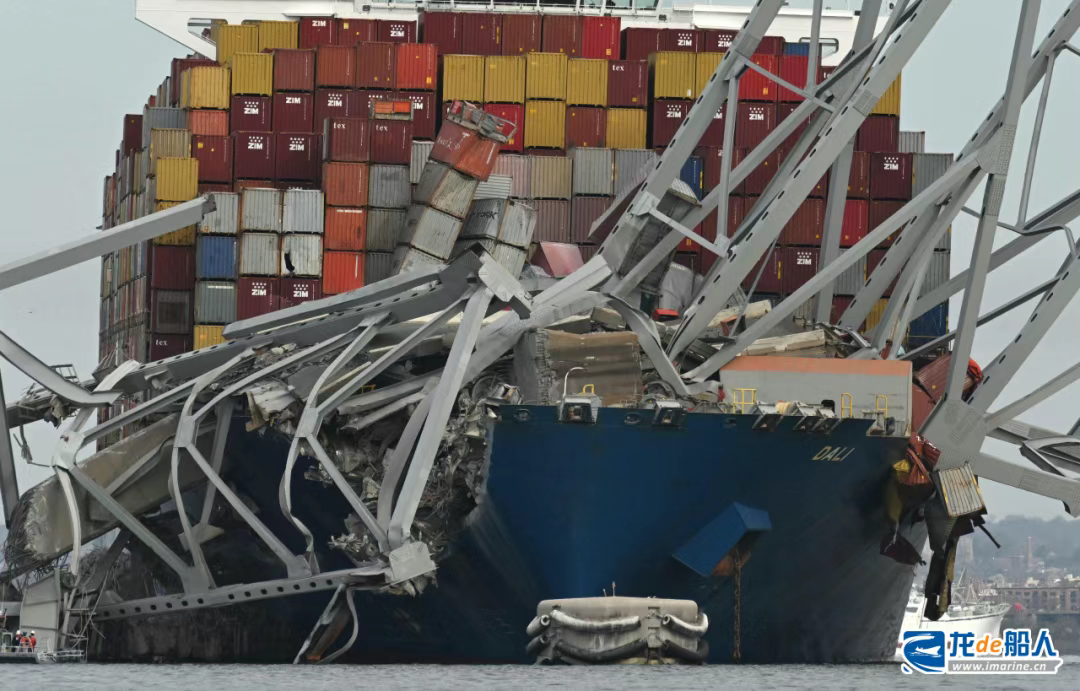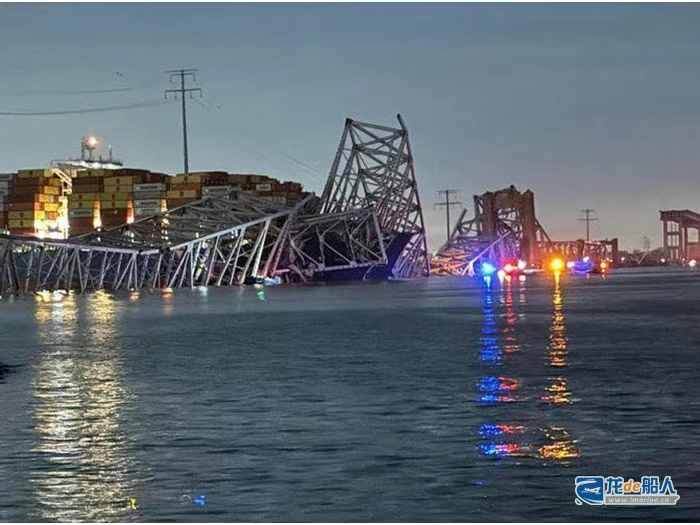The container ship “Dali” collision accident that attracted global attention has ushered in a new lawsuit. The shipyard, which had delivered the ship nine years ago when the accident occurred, was formally sued by the shipowner, accusing the ship of design and manufacturing defects.

Shipyard sued over alleged defects
On July 31, 2025, local time, the owner and ship management company of the container ship “Dali”—Grace Ocean Private and Synergy Marine (hereinafter referred to as “the plaintiffs”)—filed a lawsuit against HD Hyundai Heavy Industries over the collision between the “Dali” and the Francis Scott Key Bridge in Baltimore, Maryland, USA.
This lawsuit seeks to hold those responsible for the collision between the Dali and the bridge accountable. The accident occurred at around 1:30 a.m. on March 26, 2024, when the Dali, which was preparing to sail to Sri Lanka, collided with the bridge as it was leaving the port, causing the bridge to collapse.
The collision of the “Dali” with the bridge caused billions of dollars in damage and attracted global attention. The accident caused the severe collapse of the Francis Scott Key Bridge, a famous bridge in the United States, resulting in six deaths. The wreckage and 50,000 tons of debris from the bridge blocked the shipping channel, bringing all shipping in the Port of Baltimore to a standstill.
HD Hyundai Heavy Industries is not only the shipbuilder, but also the manufacturer of the ship’s B&W 9S90ME-C9 main engine and HIMSEN 9H32/40HD auxiliary engine for power generation.
The plaintiff filed a lawsuit in the U.S. District Court for the Eastern District of Pennsylvania, claiming that HD Hyundai Heavy Industries was responsible for the accident, alleging that “the ship’s switchboard had major defects in its design and manufacturing process, which was the core cause of the accident.”
The plaintiff pointed out in the lawsuit documents: “Hyundai Heavy Industries had defects in the design of the switchboard, resulting in loose wiring connections that could not be verified for safety, and which could disconnect during normal operation, causing the signal lines and wiring terminals to fail to maintain a secure connection. This design defect caused the switchboard and the ship itself to be in an unreasonable state of danger and defect after delivery.”
The lawsuit also states: “The circuit breaker’s UVR coil was not receiving control voltage, and it was discovered that one of the control signal wires in the UVR control circuit was not securely connected to the terminal, resulting in poor contact and an open circuit… Due to this and other defects, the signal wire could not be fully inserted into the terminal.”
Regarding the lawsuit filed by the shipowner and ship management company of the Dalli, a representative from HD Hyundai Heavy Industries stated, “Our company will carefully review the complaint and submit a response in due course. Parallel litigation will also be initiated.”

Shipowner sued for “evading responsibility”?
Previously, the investigation team composed of agencies such as the National Transportation Safety Board (NTSB) and the United States Coast Guard (USCG) quickly focused their investigation on the ship’s power supply system, critical switchboards, and electrical system distribution panels when investigating the cause of the collision accident.
As early as June 2024, the NTSB discovered a “control circuit interruption” related to the main circuit breaker. Subsequent reports indicate that inspections of the transformer and relay wiring revealed “loose cable connections.” HD Hyundai Heavy Industries representatives noted that such conditions could open a circuit and interrupt the 110VDC power supply on the high-voltage side of the switchboard. According to the report, engineers stated that this would trigger an undervoltage release, resulting in a 440V power outage, which was demonstrated during subsequent testing.
In view of this, the plaintiff attributed the cause of the power outage raised in the U.S. authorities’ investigation to HD Hyundai Heavy Industries, accusing it of failing to properly inspect wire defects and of having design flaws that could cause connections to disconnect during normal operation.
It is worth noting that before filing the lawsuit against HD Hyundai Heavy Industries, the U.S. Department of Justice filed a lawsuit against Grace Ocean Private and Synergy Marine in federal court in Maryland last September, accusing the two companies of negligence and mismanagement leading to the accident and seeking more than $100 million in damages. The claims cover property damage, economic losses, cleanup costs, personal injury, wrongful death, survivorship rights, workers’ compensation reimbursement, and cargo and general average in the Maryland civil case.
Last October, Grace Ocean Private and Synergy Marine agreed to pay more than US$100 million in settlement funds to resolve the civil lawsuit filed by the US Department of Justice. However, this settlement is only one of many claims arising from the accident and does not include compensation for rebuilding the bridge. Rebuilding the bridge will cost between US$1.7 billion and US$1.9 billion.
Some in the South Korean industry believe that Grace Ocean and Synergy Marine’s lawsuit against HD Hyundai Heavy Industries is a strategic response by the shipowners to mitigate their liability while the U.S. administrative investigation is still ongoing. Given the huge amount of compensation involved, both sides are expected to engage in a fierce battle.
Construction of the Dali began in July 2014 and the ship was delivered by Hyundai Heavy Industries in March 2015. The warranty period of Dali (typically one year after delivery) had expired at the time of the accident, and the owner had not requested maintenance prior to the incident. These factors will be advantageous for HD Hyundai Heavy Industries in this lawsuit.
The collision involving the Dali occurred nine years after the ship was delivered, and prior to that, the ship had experienced multiple power problems and malfunctions, including while docked at the Baltimore terminal.
The NTSB also highlighted maintenance issues with the ship in its report, citing examples of wear and tear and temporary repairs. The U.S. argued that the ship was unseaworthy, while Maryland and Baltimore City mentioned training and maintenance issues with the ship in their claims.


